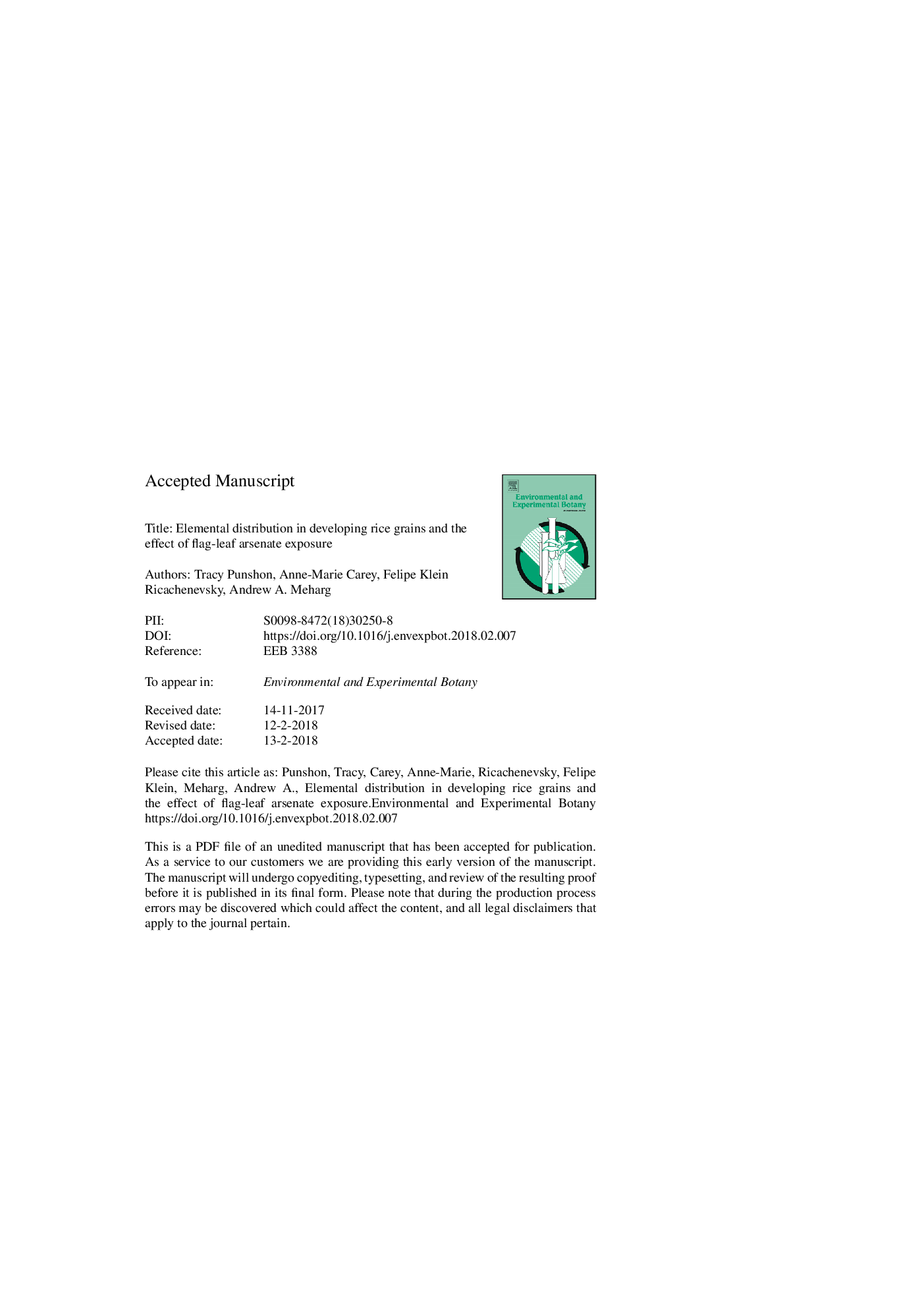| کد مقاله | کد نشریه | سال انتشار | مقاله انگلیسی | نسخه تمام متن |
|---|---|---|---|---|
| 8887046 | 1628028 | 2018 | 40 صفحه PDF | دانلود رایگان |
عنوان انگلیسی مقاله ISI
Elemental distribution in developing rice grains and the effect of flag-leaf arsenate exposure
ترجمه فارسی عنوان
توزیع عنصری در تولید گندم برنج و تأثیر آرسنات برگ
دانلود مقاله + سفارش ترجمه
دانلود مقاله ISI انگلیسی
رایگان برای ایرانیان
موضوعات مرتبط
علوم زیستی و بیوفناوری
علوم کشاورزی و بیولوژیک
بوم شناسی، تکامل، رفتار و سامانه شناسی
چکیده انگلیسی
We measured the bulk grain concentrations of arsenic (As), along with rubidium (Rb) and strontium (Sr) as indicators of phloem and xylem transport respectively, in rice (Oryza sativa cv. Italica Carolina) pulsed with arsenate (As(V)) at two exposure concentrations for 5â¯day periods at progressively later stages of grain fill, between anthesis and maturity, via the cut flag leaf. We compared these to unexposed (negative) controls and positive controls (pulsed with dimethylarsinic acid (DMA)), the most efficiency transported As species in rice. We collected elemental maps of As and micronutrient elements (Fe, Zn, Mn, Cu and Ni) from developing grains. Exposures were 25 or 100â¯Î¼g/ml As(V). We used the spatial distribution of arsenic in the grain to infer the presence of As transporters. By exposing grains via the flag leaf rather than the roots, we were able to measure arsenic transport into the grain during filling under controlled conditions. Exposure to 100â¯Î¼g/ml As(V) resulted in widespread As localization in both embryo and endosperm, especially in grains exposed to As at later stages of panicle development. This suggests loss of selective transport, likely to be the result of As toxicity. At 25â¯Î¼g/ml As(V), As colocalized with Mn in the ovular vascular trace (OVT). Exposure to either As(V) or DMA reduced grain Fe, an effect more pronounced when exposure occurred earlier in grain development. The abundance of Cu and Zn were also reduced by As. Arsenic exposure later in grain development caused higher grain As concentrations, indicating the existence of As transporters whose efficiency increases during grain fill. We conclude that localization of As in the grain is a product of both As species and exposure concentration, and that high As(V) translocation from the flag leaf can result in high As concentrations in the endosperm.
ناشر
Database: Elsevier - ScienceDirect (ساینس دایرکت)
Journal: Environmental and Experimental Botany - Volume 149, May 2018, Pages 51-58
Journal: Environmental and Experimental Botany - Volume 149, May 2018, Pages 51-58
نویسندگان
Tracy Punshon, Anne-Marie Carey, Felipe Klein Ricachenevsky, Andrew A. Meharg,
